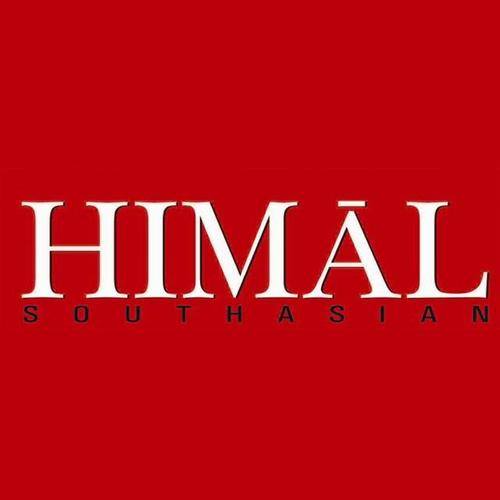In Montevideo and part of its metropolitan area, home to 1.7 million people, around 50% of Uruguay’s population, the water is “not potable in the strict definition of potability, but is drinkable and consumable,” according to a statement made in early May by the country’s Minister for the Environment.
With these words the minister justified the decision to raise the level of salinity allowed in water for human consumption above the legally established standard in response to the water scarcity brought on by the drought that has plagued the country since 2020. The legal limits of 200 milligrams per liter of sodium and 250 milligrams per liter of chlorides were raised to 440 and 750 milligrams per liter, respectively.
The water levels of the Paso Severino and Canelón Grande dams on the Santa Lucía River, which provide Montevideo’s drinking water, are no longer high enough to supply the population. Authorities have resorted to drawing water from the lower section of the river, which has higher salinity levels given its proximity to the mouth of the Río de la Plata.
Uruguay’s state-owned water utility company, the National Administration of State Sanitary Works (OSE), announced the decision in late April. Though authorities had been aware of the problem for months, they took no measures to explicitly communicate this to the public or any measures to prepare for the water and social emergency or prevent its effects.
A deluge of problems
The government’s initial statements in May, which recognized the situation but were made in a context of minimizing the problem, provoked a flood of doubts and concerns.
Various professional groups warned of health risks, mainly to groups such as people with hypertension, kidney disease, and small children. Excessive sodium intake can cause heart and skin problems, among other issues.
This started the cumulative process of identifying the affected people and processes, including industry, businesses, educational institutions, and hospitals. Educational authorities recommended, for example, not straining rice, reusing water used to cook pasta, giving children mineral water only if required (estimating one glass per meal), and flavoring tap water with mint, ginger, or rosemary to make it more palatable to children in early education centers, although the last recommendation was later rejected.
OSE’s water in Uruguay has historically been considered safe for consumption. Recent years, however, have seen episodes of bad taste or color in tap water, and a growing number of middle- and upper-class households have begun using water filters and purifiers. These devices do not remove salt, however, which means that using them does not guarantee safe or flavorless water for consumption. For that, consumers would need reverse osmosis technology, which is uncommon in Uruguay, although it has been implemented by some high-income sectors. For the majority of Montevideo’s population, access to potable water has become one more problem to deal with on a daily basis.
Mineral water bottling companies have seen their production and distribution capacity overwhelmed, leading to mineral water becoming scarce on some days and in certain places. For many, finding a way to access bottled mineral water has become necessary on a daily basis. For others this is not an option, as a 6-liter container of water costs on average $120 Uruguayan pesos, around 3 euros. Additionally, this situation is producing an enormous amount of plastic waste.
Not an isolated problem
The drought alone does not explain the situation. A major political and partisan debate is growing around inefficiencies in management and foresight by the authorities. The right-wing coalition which has governed since 2020 started a process of reducing the number of state employees, which was particularly detrimental to OSE.
The opposition has also criticized the cancellation of a dam-building project in the department of Florida. By contrast, in March 2022, OSE announced it had signed an agreement with Mekorot, Israel’s national water company, to develop the Neptuno project dropped by the previous government. This project, located in Arazatí, department of San José, has the potential to supply the metropolitan area of Montevideo with 30% of the potable water it needs.
The proposal has been the object of criticism and pleas for caution from organizations including the Federation of OSE Workers (FFOSE), REDES - Amigos de la Tierra, various scientific groups, and even the Montevideo government. Criticisms generally fall into one of two broad categories. The first is technical and is related to the complications of taking water from the Río de la Plata. Issues of salinity, cyanobacteria, and effects on the ecosystem can make the water purification process very complex. The other is that the Neptuno project has been identified as a process of privatizing water management, which is constitutionally forbidden in Uruguay under Article 47, approved via a popular referendum in 2004.
The fact that Uruguay is facing a hydro-social crisis is now widely acknowledged. Countless water-related conflicts are occurring across the country, in terms of both quantity and quality, affecting water for human consumption and recreation, as well as damaging ecosystems. In this sense, it should also be noted that, in addition to repeated cases of toxic cyanobacteria in the Río de la Plata and Uruguay River (in a country with high levels of both domestic and international beach tourism), all of the country’s major basins are registering alarmingly high levels of phosphorus and nitrogen.
Scientific studies indicate that the causes of these issues lie in inadequate sanitation and wastewater treatment and the use of very high levels of fertilizers and biocides in the predominant agricultural model. In this regard, there are long-standing objections to the effects the agricultural model has had on the ecosystems it operates in and how it affects all living things through water (among other elements). Since the mid-1990s, agribusiness has pushed an intensification of agriculture in Uruguay that obeys the hegemonic logic of production, combining cross-sectoriality, prioritization of global consumers, the generalization, broadening, and intensification of the role of capital in agrarian production processes, technological standardization, and land grabbing for large-scale production, and a central role for large financial corporations.
In view of agribusiness’s growth over the last two decades, a new Irrigation Law (Law No. 16858) was presented in 2016. Although it set off alarms in academic sectors and among social movements, the bill enjoyed unanimous support in the Uruguayan parliament. In addition to criticisms related to the risks posed to ecosystems by the construction of large reservoirs, the law’s compliance with Article 47 of the Constitution was also called into question.
The Irrigation Law opened the possibility for actors within the financial system or external to productive systems to build, operate, manage, and charge for irrigation water. Unprecedented in Uruguay, this was a substantial step forward in the commodification of water which cannot be analyzed in isolation from the general (national and global) context of water markets.
Intertwined struggles
Environmental groups have mobilized in defense of water in various ways under the slogan “No es sequía, es saqueo” (“It’s not drought, it’s looting”). In their view, the drought is just one more event in an cumulative process of water crises on a national level. One of these organizations, the Assembly for the Water of the Santa Lucía River (Asamblea por el Agua del Río Santa Lucía), has been particularly active in recent years, raising awareness of the river’s condition.
Various organizations are carrying out a series of self-organized activities. On May 31, a march called by the PIT-CNT, Uruguay's national trade union center, took place through downtown Montevideo. The self-convened assembly that arose in response to the drinking water crisis and coordinating committee of feminist organizations also endorsed the march.
2004 marked a turning point in Uruguay regarding water, its significance, and its management. After a year of major mobilization primarily promoted by the National Commission in Defense of Water and Life (CNDAV), a popular referendum approved a constitutional reform of Article 47, declaring water a public good and access to potable water and sanitation human rights to be provided by public companies. Likewise, the reform stipulated that water resources should be managed by watershed and in a participatory manner.
This process took a distinctly urban and state-centric approach to water by making production of drinking water and its management central issues. Other kinds of water, or the connection between different waters (water for consumption, water for production, water for recreation, water for ecosystems, among others), were not given sufficient attention and were addressed separately at the institutional level.
Recently however, the idea that water is abundant, widespread in Uruguay, is being questioned. This is mainly due to multiple conflicts emerging over its use and control, growing demand from certain economic sectors, large-scale electricity generation, and the resulting degradation that limits its use for human consumption. Another factor is the state-level modification of acceptable quality standards for human consumption.
This has opened up new dimensions for discussion and consideration. Water and its availability for agricultural use, for example, become an important issue, as have the effects of certain productive activities on water meant for other uses.
Mobilization to repeal the new Irrigation Law did not secure the signatures necessary to enable a referendum, but it did begin to direct the debate towards an understanding of water as an interconnected whole.
Drinking water quality may improve in the near future. Regardless, one thing is certain: Uruguay is at a crossroads when it comes to water and all it implies for life.
María Noel González is an Uruguayan anthropologist and expert in water-related and environmental issues.
Photo: DW Español / Youtube


